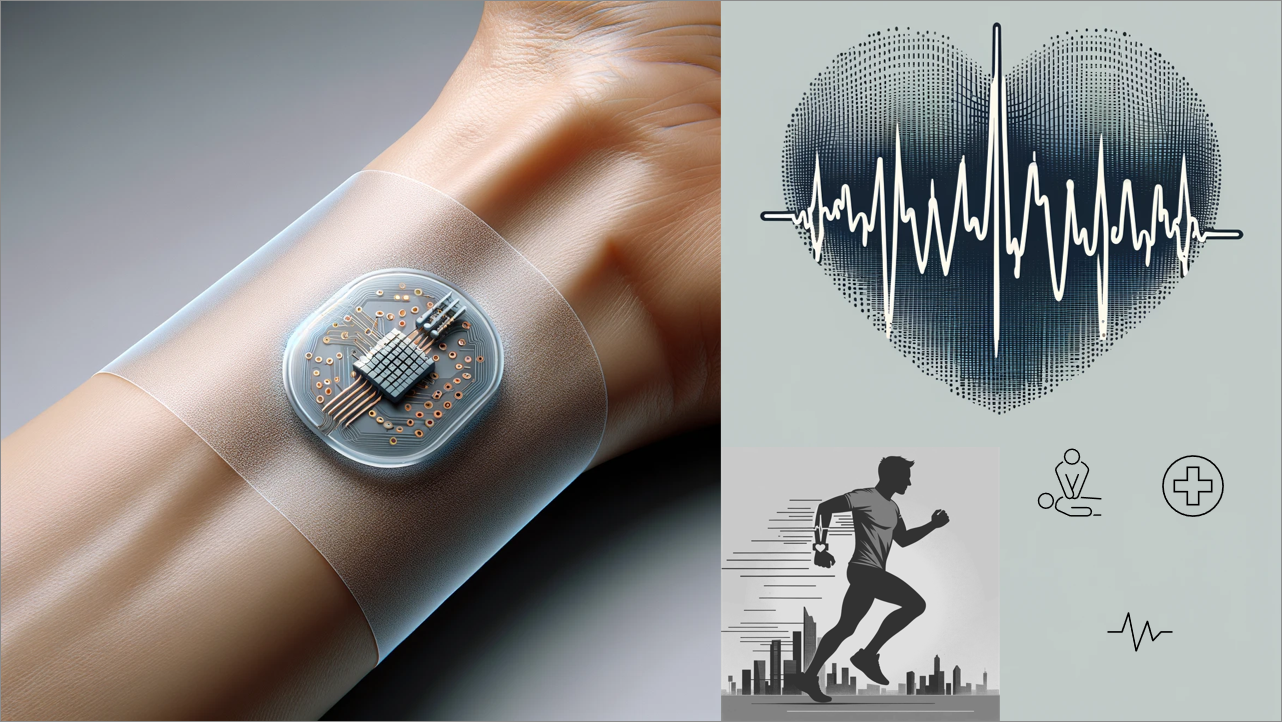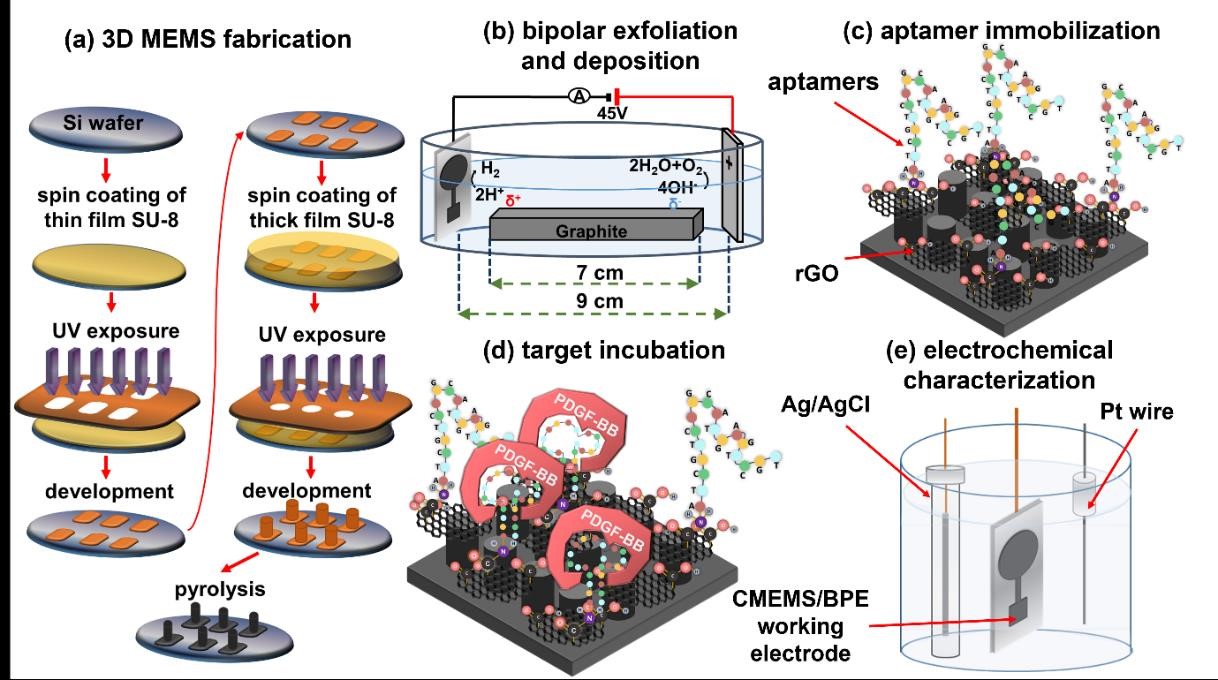
In our study about wearable sensor, we introduce a paper-based supercapacitive pressure sensor designed for wrist arterial pulse waveform monitoring. Utilizing ordinary tissue paper as the base material, the sensor is produced through a straightforward manufacturing process, offering high sensitivity and quick response times. It aims to provide a low-cost, easily manufacturable solution for real-time cardiovascular health monitoring. The sensor's stability was confirmed through cyclic testing, and it accurately captured pulse waveforms from various arterial locations, demonstrating its potential in early cardiovascular disease diagnosis. This work presents a new perspective and tool for developing wearable health monitoring technologies

In our recent study, we introduced the development of a label-free electrochemical aptasensor based on the integration of 3D carbon microelectromechanical systems (C-MEMS) microelectrodes with bipolar exfoliated reduced graphene oxide (rGO) for the detection of the cancer biomarker platelet-derived growth factor-BB (PDGF-BB). Utilizing the principles of bipolar electrochemistry, this method overcomes the limitations associated with traditional rGO synthesis and deposition methods. PDGF-BB affinity aptamers are covalently attached to the rGO surface, enabling the aptasensor to detect PDGF-BB with high sensitivity and a low detection limit through a turn-off sensing strategy by measuring changes in areal capacitance. The study highlights the advantages of integrating BPE-rGO with C-MEMS technology, such as simplicity, efficiency, and environmental friendliness, which holds significant promise for the development of high-performance, graphene-based lab-on-chip and preclinical cancer diagnostic technologies.





